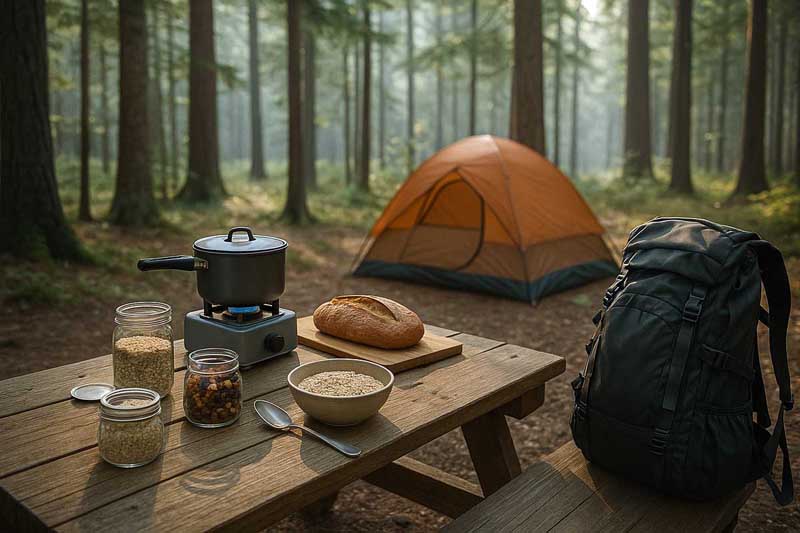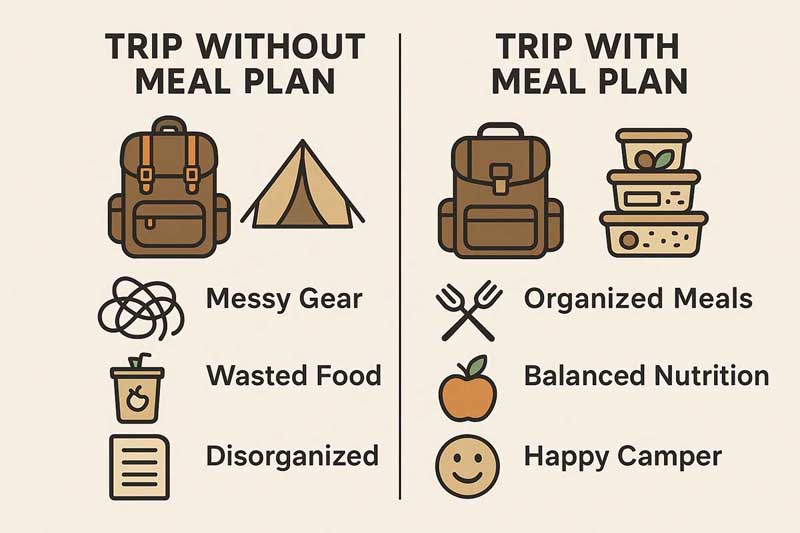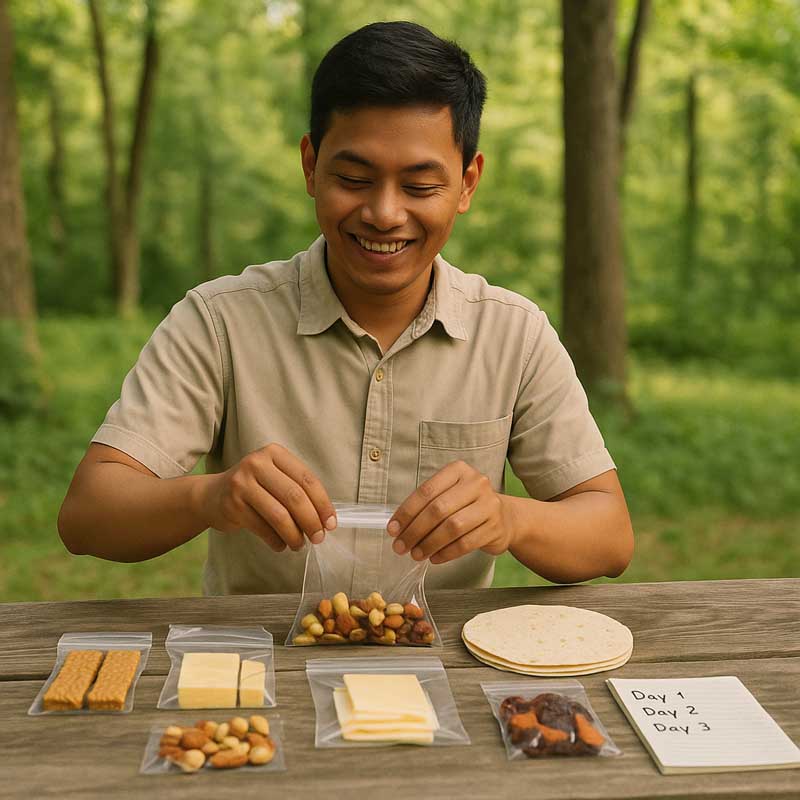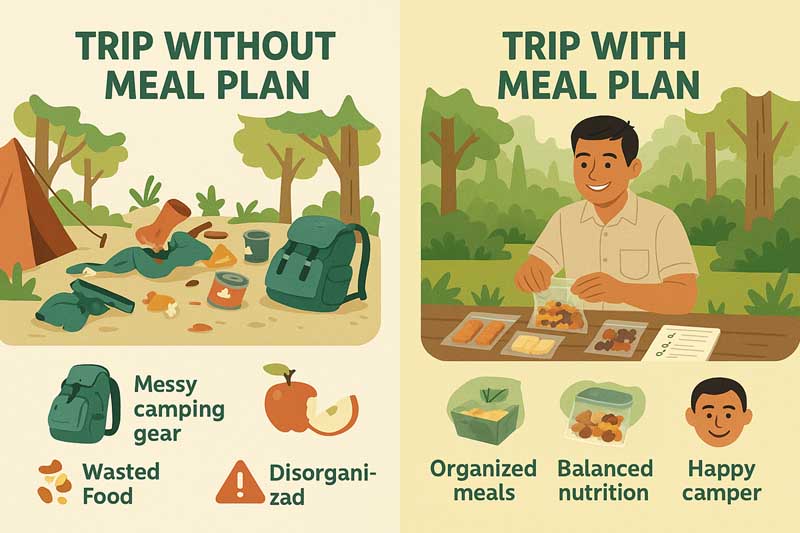Why I Plan My Meals First Before Packing Anything
By Henry Qualls, Outdoor Enthusiast (New York)

I’ve eaten my fair share of soggy sandwiches and half-frozen dinners on the trail. Learning to plan meals before I touched my backpack transformed my trips. Proper planning means balanced nutrition, less waste, and more time around the fire. In this article, I’ll share my proven method—straightforward steps, real advice, and example menus—to help you fuel your next trip efficiently.
Why Meal Planning Matters

Without a clear plan, it’s easy to overpack items you won’t eat or underpack staples you’ll desperately crave. Planning meals first ensures you:
- Match Calories to Activity: Camping burns energy. A targeted plan prevents midday slumps.
- Minimize Waste: You only bring what you’ll use—no limp lettuce at the end of a trip.
- Save Space and Weight: Lightweight, shelf-stable ingredients replace bulky perishables.
- Reduce Decision Fatigue: No more staring at random supplies wondering, “What do I eat next?”
If you're planning your next outdoor adventure, check out this guide on the best food to cook over a campfire for easy, flavorful meals that bring everyone together around the fire. Research shows that meal planning best practices help maintain healthy eating habits both at home and on the trail—critical when you need steady fuel for hiking or paddling.
Key Benefits of Planning Meals First

- Nutrition Balance: Ensures you get protein, carbs, and fats each day, preventing mid-trip sugar or caffeine binges.
- Cost Efficiency: Buying bulk or multi-use ingredients cuts costs and avoids overpriced last-minute purchases.
- Time Management: Pre-measured ingredients speed up campsite prep, giving you more time to enjoy scenery.
- Environmental Impact: Limits packaging waste by bringing only needed portions and encouraging reusable containers.
Step-by-Step Meal-First Packing Process
Step 1: Define Trip Length and Itinerary
Note the number of nights, meals per day, and special outings (e.g., summit attempt). Account for travel days where you may eat en route.
Step 2: Choose Recipes and Portion Sizes
Select simple, tested recipes (e.g., oatmeal, dehydrated chili, pasta). Calculate calories—aim for 2,500–3,500 kcal/day depending on activity level. For more ideas, check Backpacker Magazine.
Step 3: Create a Master Ingredient List
| Meal | Ingredients |
|---|---|
| Breakfast | Instant oats (100 g), powdered milk (30 g), nuts |
| Lunch | Tortillas (2), cheese (50 g), summer sausage (40 g) |
| Dinner | Dehydrated chili pouch (1), olive oil (10 g) |
| Snacks | Trail mix (80 g), energy bars (2) |
Tip: Weigh items on a kitchen scale to ensure accuracy.
Step 4: Optimize for Weight and Space
Transfer items into lightweight zip-lock bags. Remove excess air and nest ingredients by meal. Consolidate spices in a small container.
Step 5: Pack and Organize
Place meal bags in a dry bag or dedicated compartment. Label each bag by day and meal (e.g., “Day 1 – Breakfast”). Keep snacks within easy reach for on-the-go fuel.
Practical Tips and Tricks
- Pre-soak grains in sealed bags overnight for faster cooking.
- Use one-pot recipes to cut down on dishes and fuel consumption.
- Freeze-dry leftovers at home to bring back cooked meals.
- Balance fresh and shelf-stable foods—apples or carrots add crunch and last several days.
- Mix spices ahead in a small container to save weight.
For more on camping meal prep, see REI Expert Advice.
Sample 3-Day Meal Plan

| Day | Breakfast | Lunch | Dinner | Snacks |
|---|---|---|---|---|
| Day 1 | Instant oats + dried fruit | Tortilla wrap + cheese & salami | Dehydrated risotto + olive oil | Trail mix, granola bar |
| Day 2 | Pancake mix + powdered milk | Peanut butter & honey on wrap | Pre-made curry pouch + rice | Jerky, dried mango |
| Day 3 | Granola + powdered milk | Tuna pouch + crackers | Ramen noodles + freeze-dried veggies | Nuts, energy chews |
Essential Gear for Meal-First Campers
- Compact stove & fuel with windscreen
- Lightweight titanium cookware
- Collapsible bowl & spoon
- Digital kitchen scale
- Dry bags for waterproof organization
Final Thoughts
By planning meals before packing anything, you’ll streamline your prep, cut waste, and stay energized from first light to the final campfire glow. Whether tackling a local state park loop or a multi-day trek, a meal-first approach turns cooking from a chore into a highlight. Enjoy stress-free meals and focus on the adventure ahead.
Learn more about campfire cooking on Wikipedia.